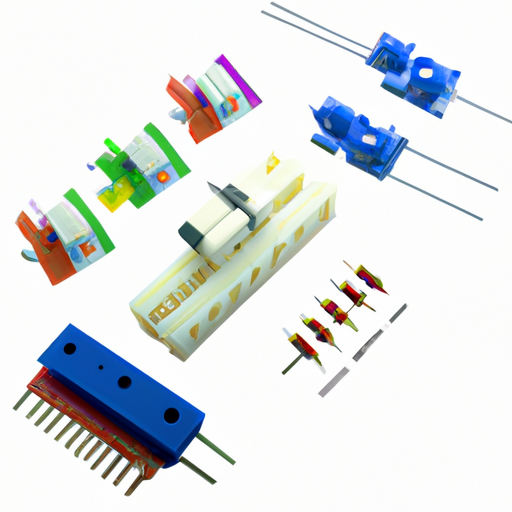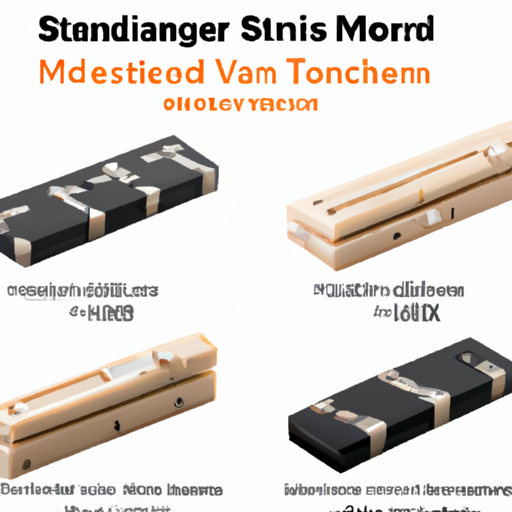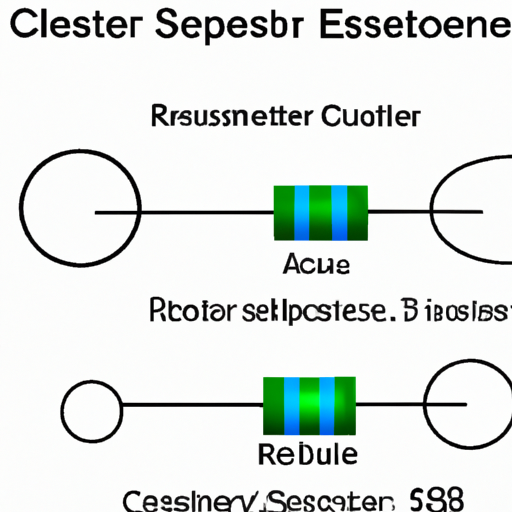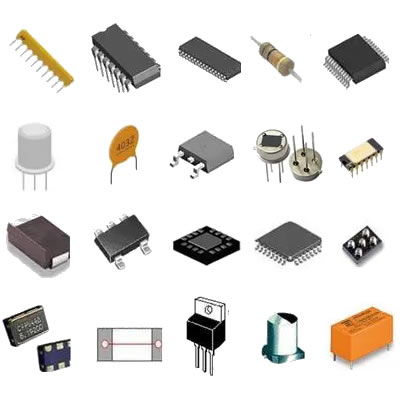What are the important product categories of resistor boxes?
Important Product Categories of Resistor Boxes
I. Introduction
A. Definition of Resistor Boxes
Resistor boxes, also known as resistor networks or resistor banks, are essential components in the field of electronics. They consist of multiple resistors housed in a single enclosure, allowing for easy access and manipulation of resistance values. These devices are designed to provide a range of resistance values for various applications, making them invaluable tools for engineers, educators, and hobbyists alike.
B. Importance of Resistor Boxes in Electronics
In the world of electronics, resistor boxes play a crucial role in circuit design, testing, and calibration. They allow for precise control over resistance, enabling users to simulate different circuit conditions without the need for multiple individual resistors. This versatility not only saves time but also enhances the accuracy of experiments and prototypes. As technology continues to evolve, the demand for reliable and efficient resistor boxes remains high.
C. Overview of the Article
This article will explore the important product categories of resistor boxes, detailing their types, key features, applications, and considerations for selection. By the end, readers will have a comprehensive understanding of resistor boxes and their significance in the electronics industry.
II. Types of Resistor Boxes
A. Fixed Resistor Boxes
1. Description and Functionality
Fixed resistor boxes contain resistors with predetermined resistance values that cannot be adjusted. These boxes are typically used when a specific resistance is required for a circuit. They are straightforward in design and operation, making them ideal for various applications.
2. Common Applications
Fixed resistor boxes are commonly used in educational settings, laboratories, and testing environments. They are particularly useful for demonstrating Ohm's law and other fundamental electrical principles. Additionally, they are employed in circuit testing where specific resistance values are needed.
B. Variable Resistor Boxes
1. Description and Functionality
Variable resistor boxes, also known as rheostats or potentiometers, allow users to adjust the resistance value within a certain range. This adjustability makes them suitable for applications where fine-tuning of resistance is necessary.
2. Common Applications
These resistor boxes are widely used in audio equipment, lighting control, and motor speed control. They are also valuable in educational settings, where students can experiment with varying resistance to observe its effects on current and voltage.
C. Precision Resistor Boxes
1. Description and Functionality
Precision resistor boxes are designed to provide highly accurate and stable resistance values. They are constructed using high-quality materials and are often calibrated to ensure minimal deviation from specified values.
2. Common Applications
Precision resistor boxes are essential in research and development, calibration of measuring instruments, and high-accuracy testing environments. They are used in applications where even the slightest variation in resistance can lead to significant errors.
D. Programmable Resistor Boxes
1. Description and Functionality
Programmable resistor boxes offer advanced functionality by allowing users to set resistance values digitally. These devices can be controlled via software, enabling automation and integration into complex systems.
2. Common Applications
Programmable resistor boxes are commonly used in automated testing setups, simulation environments, and advanced research applications. They provide flexibility and precision, making them ideal for modern electronic design and testing.
III. Key Features of Resistor Boxes
A. Resistance Range
The resistance range of a resistor box is a critical feature that determines its versatility. Users should consider the minimum and maximum resistance values available in the box to ensure it meets their specific needs.
B. Tolerance Levels
Tolerance levels indicate the accuracy of the resistance values provided by the resistor box. A lower tolerance percentage signifies higher accuracy, which is essential for applications requiring precise measurements.
C. Power Rating
The power rating of a resistor box indicates the maximum power it can handle without overheating. Users must select a resistor box with an appropriate power rating based on their application to prevent damage.
D. Temperature Coefficient
The temperature coefficient measures how much the resistance value changes with temperature variations. A low temperature coefficient is desirable for applications requiring stable performance across different environmental conditions.
E. Form Factor and Size
The form factor and size of a resistor box can impact its usability and integration into existing systems. Users should consider the physical dimensions and layout to ensure compatibility with their setups.
IV. Applications of Resistor Boxes
A. Educational Purposes
1. Use in Laboratories
Resistor boxes are commonly used in educational laboratories to teach students about electrical concepts. They provide a hands-on experience, allowing students to experiment with different resistance values and observe their effects on current and voltage.
2. Teaching Electronics Concepts
Instructors can use resistor boxes to demonstrate fundamental principles such as Ohm's law, series and parallel circuits, and the behavior of resistors in various configurations. This practical approach enhances students' understanding of theoretical concepts.
B. Testing and Calibration
1. Use in Equipment Testing
Resistor boxes are essential tools for testing electronic equipment. They allow engineers to simulate different load conditions and verify the performance of devices under various resistance scenarios.
2. Calibration of Instruments
Calibration is crucial for ensuring the accuracy of measuring instruments. Resistor boxes provide known resistance values that can be used to calibrate multimeters, oscilloscopes, and other testing equipment.
C. Prototyping and Development
1. Use in Circuit Design
During the prototyping phase of circuit design, engineers often need to test various resistance values to optimize performance. Resistor boxes facilitate this process by providing a range of resistance options in a single device.
2. Rapid Prototyping
In fast-paced development environments, resistor boxes enable rapid prototyping by allowing engineers to quickly adjust resistance values without the need for soldering or replacing individual resistors.
D. Research and Development
1. Use in Experimental Setups
In research settings, resistor boxes are used to create specific circuit conditions for experiments. They allow researchers to manipulate resistance values easily, enabling precise control over experimental variables.
2. Advanced Research Applications
Advanced research applications often require high-precision measurements and control. Precision and programmable resistor boxes are particularly valuable in these contexts, providing the accuracy and flexibility needed for cutting-edge research.
V. Considerations When Choosing a Resistor Box
A. Application Requirements
When selecting a resistor box, users should consider their specific application requirements, including the desired resistance range, accuracy, and power rating. Understanding the intended use will help narrow down the options.
B. Budget Constraints
Budget is an important factor in the selection process. While high-end precision and programmable resistor boxes offer advanced features, users should assess their needs to determine the best value for their investment.
C. Manufacturer Reputation
Choosing a reputable manufacturer is crucial for ensuring the quality and reliability of the resistor box. Users should research manufacturers, read reviews, and consider industry standards when making their selection.
D. Availability of Support and Documentation
Comprehensive support and documentation are essential for users, especially in complex applications. Manufacturers that provide detailed manuals, technical support, and online resources can enhance the user experience and facilitate effective use of the resistor box.
VI. Conclusion
A. Summary of Key Points
Resistor boxes are vital components in the electronics industry, offering a range of functionalities that cater to various applications. Understanding the different types of resistor boxes, their key features, and their applications can help users make informed decisions when selecting the right device for their needs.
B. Future Trends in Resistor Box Technology
As technology continues to advance, we can expect to see innovations in resistor box design and functionality. Developments in digital control, miniaturization, and integration with smart technologies will likely enhance the capabilities of resistor boxes, making them even more versatile and user-friendly.
C. Final Thoughts on the Importance of Resistor Boxes in Electronics
In conclusion, resistor boxes are indispensable tools in electronics, serving a wide range of purposes from education to advanced research. Their ability to provide precise and adjustable resistance values makes them essential for anyone working in the field of electronics. As the industry evolves, the importance of resistor boxes will only continue to grow, solidifying their place as a fundamental component in electronic design and testing.
VII. References
A. Suggested Reading
- "The Art of Electronics" by Paul Horowitz and Winfield Hill
- "Electronic Principles" by Albert Malvino and David Bates
B. Industry Standards and Guidelines
- IEC 60115: Fixed Resistors for Use in Electronic Equipment
- EIA-198: Standard for Resistor Networks
C. Manufacturer Websites and Product Catalogs
- Vishay Intertechnology
- Ohmite Manufacturing Company
- Bourns, Inc.





